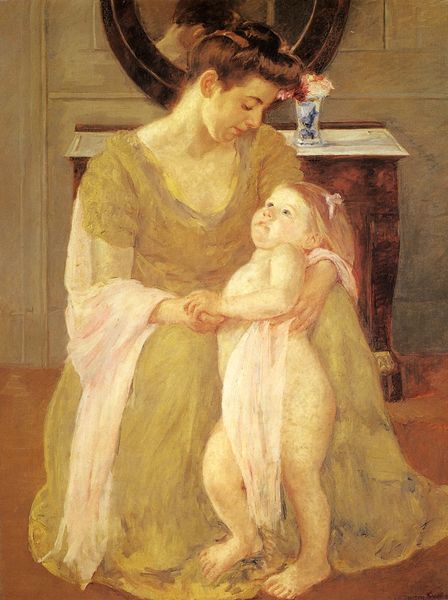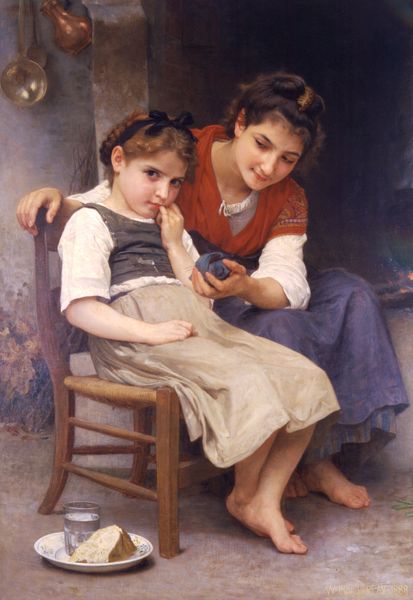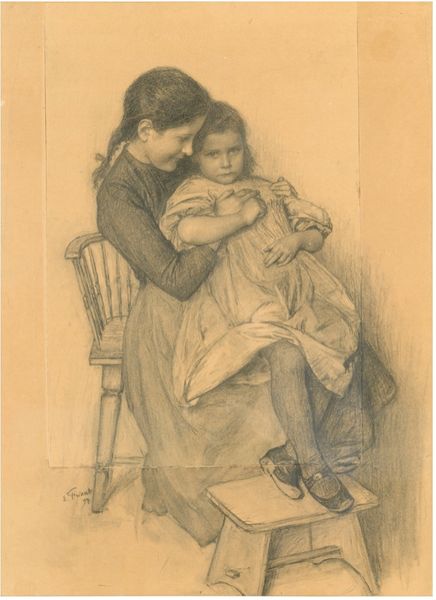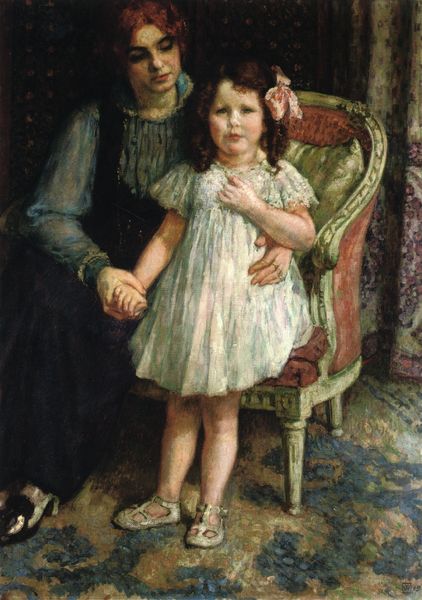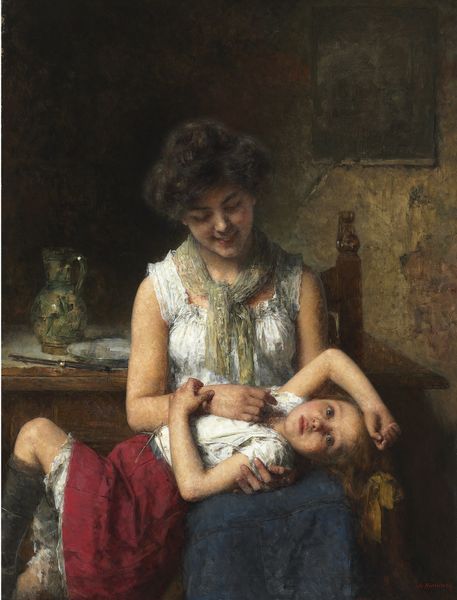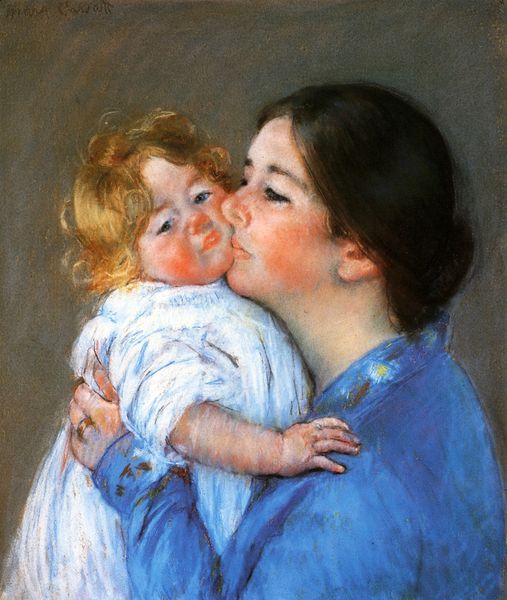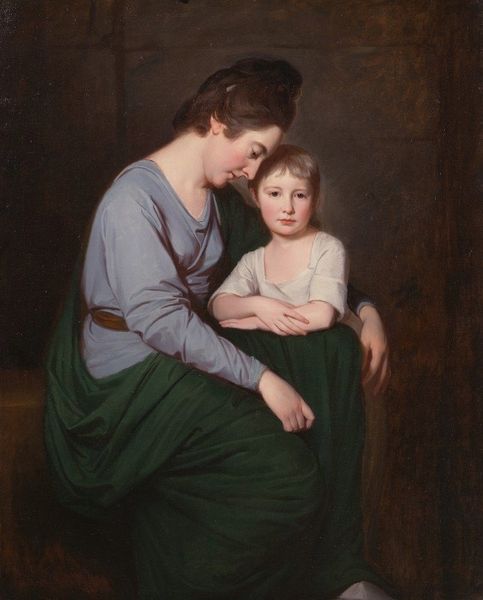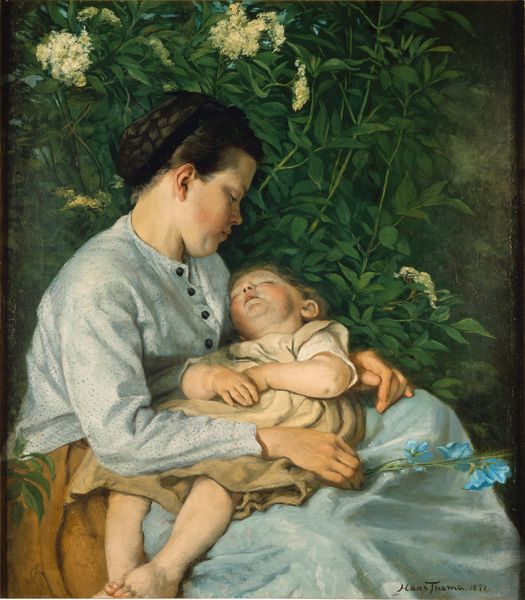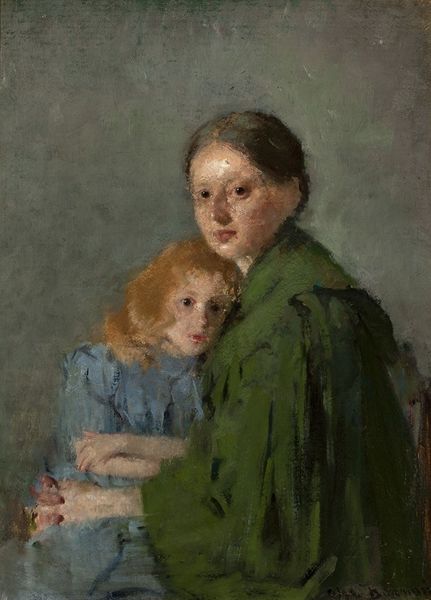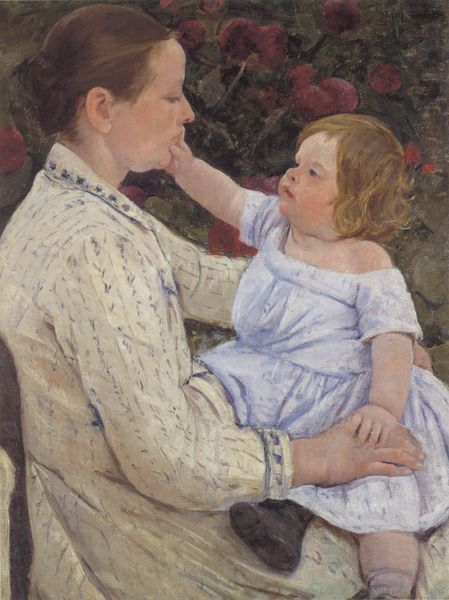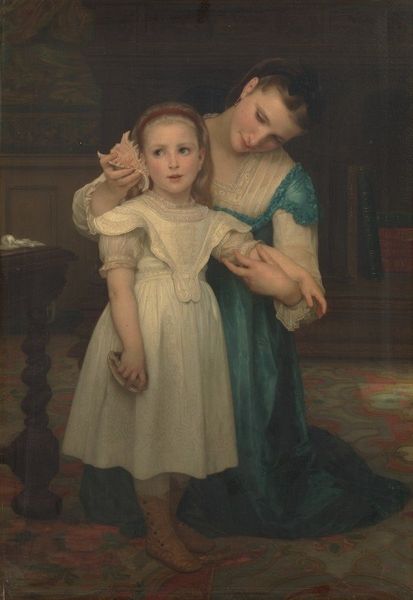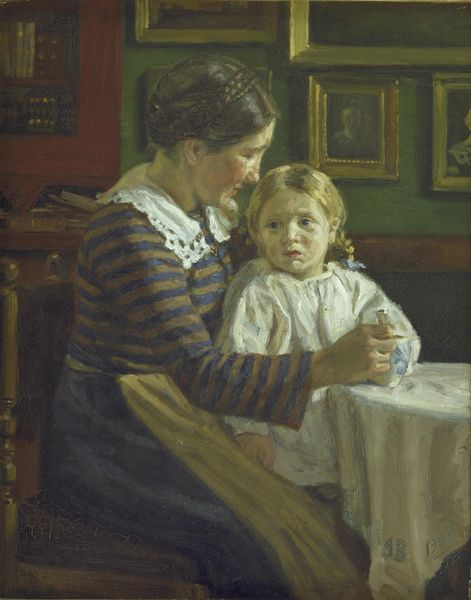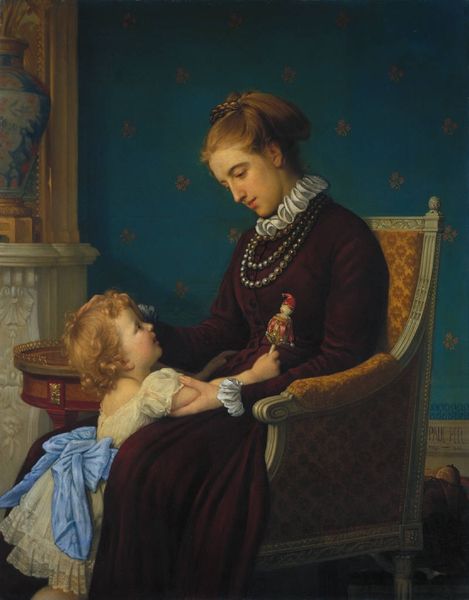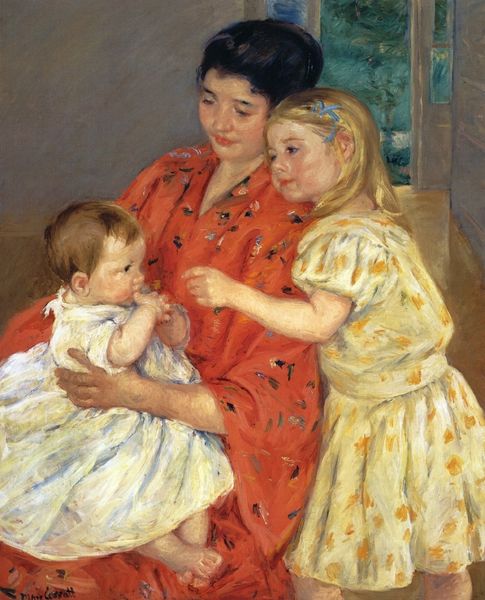
painting, oil-paint
#
portrait
#
painting
#
oil-paint
#
intimism
#
symbolism
#
genre-painting
#
academic-art
#
realism
Dimensions: 44 x 69 cm
Copyright: Public domain
Curator: Here we see Émile Friant’s 1898 oil painting, “The Child’s Sorrow.” It's quite evocative. Editor: Indeed. The painting is quite affecting. The contrast between the two girls is immediate; one seemingly offering comfort, while the other looks quite distraught. Curator: Let’s explore that dynamic. Considering the era, it’s fascinating to consider how societal expectations influenced Friant's depiction of girlhood. How does the painting, through the lens of gender and power dynamics, portray female emotional experience? Is this intimism or simply another variant of the patriarchal gaze? Editor: I see it rooted more firmly in its material context. Notice how the soft, almost worn textures of their clothes suggest a life lived with practical realities, a directness contrasting the sentimental idealization so prevalent at the time. How does the artist's deliberate choice of muted tones influence our perception of class and labour here? Curator: That is a good point, and one that sheds some light on Friant's stylistic approach to Realism with elements of Symbolism; not just raw representation but heightened meaning through form. Looking at other pieces by Friant like "October," you could easily say that he tries to communicate his vision of his epoch by taking his observation directly from it. I wonder how his politics played into the subjects of his work? Editor: Definitely, that connection to "October" makes it hard to divorce the imagery from the physical conditions of life. We need to look closely at the construction, brushstrokes, and application of oil. The fact that we see that stool tells me the figures are of the labor class, yet they appear posed in order to represent something other than what their means portray them as. This piece really is one that is deeply tied into both historical events, the people in them, and those figures places within it. Curator: So while he may not have explicitly been calling for equality in every sense of the term, what could he have been saying with these figures' gaze in "The Child’s Sorrow?” Perhaps through the juxtaposition, Friant urges us to contemplate the universal nature of childhood suffering within vastly different socio-economic frameworks? Editor: Well, seeing as this piece, at its most basic, explores youth in all of its sorrowful beauty and melancholic realities, and because Friant was invested in recording daily contemporary life, one can only imagine the thoughts he may have pondered at the time he was working on this portrait. A true product of its time! Curator: It certainly seems that you are right about the fact that the materials of their class speak just as loudly as the composition of this tender painting.
Comments
No comments
Be the first to comment and join the conversation on the ultimate creative platform.
